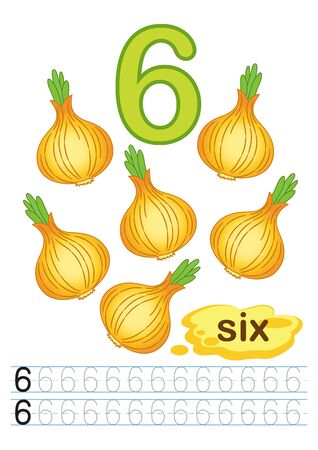Significance of Santan Gopal Yantra in Hindu Traditions
The Santan Gopal Yantra holds a unique and revered position in Hindu households, especially among couples aspiring to experience the joys of parenthood. Rooted deeply in Vedic traditions, this sacred yantra is dedicated to Lord Krishna in his child form—known as Bal Gopal or Santan Gopal—symbolising innocence, vitality, and divine blessings for progeny. In Indian culture, having children is not just seen as a familial milestone but also as a spiritual fulfilment, believed to continue ancestral lineage and uphold dharma. For centuries, devotees have placed their trust in the mystical energies of the Santan Gopal Yantra, seeking its blessings to overcome challenges related to conception and childbirth. Its presence in homes reflects hope, faith, and the unbreakable bond between spirituality and daily life. The yantra is believed to invoke positive vibrations that remove obstacles, foster marital harmony, and bring forth the grace necessary for healthy offspring. As per traditional beliefs across various regions of India—from Uttar Pradesh to Tamil Nadu—rituals involving this yantra are performed with utmost devotion by families yearning for children, making it an essential element in many Hindu fertility rites.
2. Choosing a Genuine Santan Gopal Yantra: What to Look For
In Indian households, selecting an authentic Santan Gopal Yantra is a sacred step towards invoking blessings for childbearing. Since this yantra is directly associated with Lord Krishna’s bal roop (child form), ensuring its authenticity and purity is crucial in Hindu rituals. Traditionally, families rely on guidance from elders, priests, or trusted spiritual gurus to avoid replicas that may lack the desired spiritual potency.
Sourcing the Yantra: Trusted Places Matter
The first and most important aspect is sourcing your yantra from reputable places. Many devotees prefer acquiring their yantra from renowned temples, especially those dedicated to Lord Krishna or Bal Gopal. Alternatively, reputed spiritual stores—either local or online—are considered suitable if they have a history of providing consecrated items. Avoid marketplaces where authenticity cannot be verified.
Checklist for Selecting an Authentic Santan Gopal Yantra
| Criteria | Significance in Indian Tradition |
|---|---|
| Sourced from Temples/Reputed Stores | Ensures sanctity and correct energization as per Vedic rituals |
| Material (Copper/Brass/Panchdhatu) | Traditional metals believed to hold spiritual energy effectively |
| Proper Engravings (Sanskrit Yantras & Deity Images) | Authenticity is reflected through accurate script and symbols |
| Consecration by Priest or Guru | Energized yantras are infused with divine vibrations during puja |
Signs of an Energized Yantra
An authentic Santan Gopal Yantra will often carry subtle signs of being blessed—a sandalwood paste mark, kumkum tilak, or even a prasad packet. Ask for a certificate of authenticity or details of the consecration ritual if buying from a store.
Cultural Insight: Why Authenticity Matters
In Indian tradition, the faith you invest in any spiritual object is amplified by its purity and source. An authentic yantra becomes a conduit for divine blessings only when it has been properly energized and handled with reverence. This deep respect for rituals is what binds the spiritual fabric of Hindu families across generations, making the careful selection of the Santan Gopal Yantra not just a ritual but a heartfelt prayer for new beginnings.

3. Purification and Pran Pratishtha Rituals
In the sacred journey of inviting the Santan Gopal Yantra into your home, purification and Pran Pratishtha rituals form the heart of its spiritual activation. These steps are essential to ensure that the Yantra becomes a living conduit for divine blessings, particularly for couples yearning for the joy of parenthood.
Step 1: Cleansing the Yantra
Begin by selecting an auspicious day, preferably a Thursday or during Shubh Muhurat as per your family priest’s guidance. Place the Yantra on a clean wooden platform facing east. Wash it gently with a mixture of raw milk and water, then wipe it dry with a soft cloth. Sprinkle Gangajal (holy Ganga water) over the Yantra to purify it further, chanting “Om Apavitrah Pavitro Va Sarvavastham Gato’pi Va” as is customary in many Indian households.
Step 2: Setting the Sacred Space
Create a peaceful atmosphere by lighting incense sticks and a ghee diya (lamp). Decorate the area with fresh flowers and place offerings of fruits and sweets nearby. Involve all family members, especially those seeking child blessings, as their presence amplifies the ritual’s intent according to Indian tradition.
Step 3: Energizing with Vedic Mantras
Pran Pratishtha Vidhi
The energizing process begins by invoking Lord Krishna and other deities associated with fertility through Vedic chants. Recite the Santan Gopal Mantra—“Om Devaki Sudha Govind Vasudeva Jagatpate, Dehi me Tanayam Krishna Twaamaham Sharanam Gatah”—108 times using a Tulsi mala. This mantra is believed to infuse life force into the Yantra, transforming it from a simple object to a powerful spiritual tool.
Traditional Practices in Indian Homes
As is common in Indian culture, women often adorn themselves in yellow attire during this puja, signifying hope and positivity. The entire family joins hands in prayer after completing the mantra recitation, reinforcing unity and shared intention for child blessing. End the ritual by offering naivedya (food offering) and distributing prasad among family members.
These purification and energizing steps are not merely formalities—they embody deep respect for ancient wisdom and collective faith in divine grace. By following these traditional methods with devotion, families in India have long sought to invoke the benevolent energies of Santan Gopal Yantra for fulfilling their cherished dreams of parenthood.
4. Ideal Placement in the Home According to Vastu Shastra
In Indian households, the placement of sacred objects like the Santan Gopal Yantra is a matter of deep significance. According to Vastu Shastra—the ancient Indian science of architecture—positioning spiritual items in specific directions enhances their positive energies and aligns them with the family’s aspirations, particularly for those seeking blessings of progeny. The Santan Gopal Yantra, dedicated to Lord Krishna as a divine child, is especially revered by couples desiring children or wishing to promote harmony and wellbeing among existing offspring.
Auspicious Directions for Placement
Vastu principles emphasize that the direction in which a Yantra is placed can greatly influence its power. The most favorable directions for installing the Santan Gopal Yantra are the North-East (Ishan) and East zones of your home. These directions are believed to attract divine energy and foster purity, making them ideal for child-related blessings. Placing the Yantra here not only strengthens spiritual vibrations but also aligns with Hindu customs that associate these directions with new beginnings and growth.
Recommended Rooms for Installation
The room where the Yantra is placed should reflect calmness and sanctity. Commonly chosen spaces include:
| Room | Vastu Benefits | Cultural Significance |
|---|---|---|
| Puja Room / Mandir | Maximizes spiritual energy; best for regular prayers | The heart of Hindu rituals; tradition supports sacred object placement here |
| Master Bedroom (in Northeast/East corner) | Promotes fertility and marital harmony | Symbolizes intimacy and hope for new life in Indian families |
| Living Room (on an altar facing East/Northeast) | Allows family participation in daily worship | Encourages collective blessings; suitable for joint families |
Additional Vastu Tips and Family Customs
– Always ensure the Yantra is placed on a clean, elevated platform—preferably made of wood.
– Avoid placing the Yantra directly on the floor or near bathrooms and kitchens, as per traditional beliefs.
– Keep fresh flowers or a diya (lamp) near the Yantra to enhance its sacred aura.
– In South Indian homes, it’s customary to decorate the Yantra area with rangoli or kolam during festivals.
– Never place heavy objects over or around the Yantra; keep its space open and respected.
By thoughtfully following these Vastu guidelines and respecting local customs, families can create an environment where the Santan Gopal Yantra radiates its full potential—inviting joy, prosperity, and the cherished blessing of children into their lives.
5. Daily Worship: Offerings, Mantras, and Rituals
Performing daily puja of the Santan Gopal Yantra is considered highly auspicious for couples seeking the divine blessings of Lord Krishna in the form of a child. In Indian households, regular worship is not merely a ritual but an intimate expression of devotion and hope. Here’s a guide to help you honour the yantra with authenticity and heartfelt sincerity.
Begin with Purity and Preparation
Start your day by bathing and wearing clean clothes before approaching the altar where the Santan Gopal Yantra is placed. Ensure that the yantra, as well as the surrounding area, are cleaned regularly. Light a diya (oil lamp) and incense sticks (agarbatti), letting their fragrance purify the environment, creating an atmosphere conducive to devotion.
Offerings That Symbolize Reverence
Fresh flowers, preferably yellow or white, are ideal offerings as they are dear to Lord Krishna. Place them gently on or near the yantra. You may also offer tulsi leaves, which hold special significance in Hindu worship, especially when praying for progeny. Alongside, keep some homemade sweets like makhan-mishri (butter and sugar), recalling Krishna’s childhood fondness for these treats.
Chanting Powerful Santan Gopal Mantras
The recitation of mantras is central to invoking blessings from the deity residing in the yantra. The most revered mantra for this purpose is:
“Om Devaki Sut Govind Vasudev Jagatpate, Dehi me tanayam Krishna Tvaamaham Sharanam gatah”
Chant this mantra 108 times using a tulsi mala or rudraksha mala, focusing your intentions on your desire for child blessing. If possible, perform this chanting as a couple for enhanced spiritual resonance.
Conclude with Heartfelt Prayers
After offering flowers, sweets, and chanting mantras, close your eyes and share your hopes and dreams with Lord Krishna in silence or through simple heartfelt words. Express gratitude for His blessings so far and seek His continued grace in your journey toward parenthood.
Cultural Significance in Indian Homes
This daily puja becomes not just a ritual but a cherished routine that strengthens faith and unity within the family. Over time, it nurtures patience, optimism, and emotional resilience—virtues deeply respected in Indian culture. With regular worship of the Santan Gopal Yantra using these Indian rituals, devotees believe that the path towards receiving child blessings becomes brighter and more assured.
6. Precautions and Common Mistakes to Avoid
When inviting the divine blessings of Santan Gopal Yantra for child blessing in Hindu rituals, it is essential to observe certain precautions rooted in Indian spiritual etiquette. Improper handling or careless placement can diminish its positive effects or even bring about unintended obstacles. Let us discuss some of the most common errors and culturally important do’s and don’ts to ensure that your devotion is both respectful and fruitful.
Improper Handling of the Yantra
One frequent mistake is touching the Yantra with unclean hands or placing it on an unclean surface. According to Hindu traditions, all sacred items should be handled only after bathing or washing hands thoroughly. The Yantra must always be placed on a clean, preferably red or yellow cloth, symbolizing purity and auspiciousness.
Avoid Inauspicious Placement
Placing the Santan Gopal Yantra in locations that are considered impure, such as near bathrooms, on the floor, or in cluttered areas, is highly discouraged. The Yantra should face East or North-East direction and occupy a calm, sacred space—ideally within your puja room or altar where daily worship takes place.
Cultural Dos and Donts
Do recite the prescribed mantras with sincerity and devotion; do not treat the ritual as a mechanical process. Always use fresh flowers and pure ghee for offerings. Don’t point your feet towards the Yantra or touch it with your feet—a gesture considered disrespectful in Indian culture. Avoid using damaged or broken Yantras as they are believed to disrupt spiritual energy.
The Importance of Timing and Ritual Cleanliness
Performing rituals at inauspicious times or neglecting personal cleanliness can nullify the benefits of worshipping Santan Gopal Yantra. Always consult a learned pandit or refer to the Hindu Panchang for shubh muhurat (auspicious timing) before commencing any ritual.
Conclusion: Honouring Tradition for Divine Blessings
By respecting these traditional guidelines and avoiding common mistakes, you nurture a deeper connection with Santan Gopal and invite divine grace into your life. Remember, reverence for ritual details reflects not just faith but also a sincere desire for growth and harmony within your family as per the timeless wisdom of Indian spirituality.


